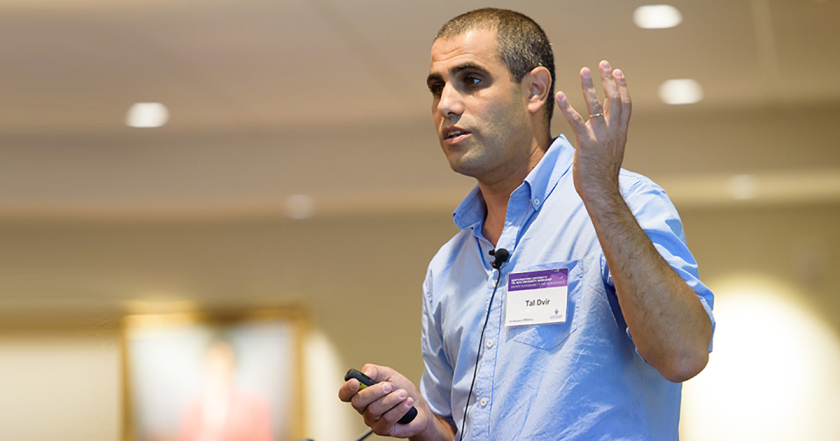
Professor Dvir received a PhD in Biotechnology Engineering at Ben-Gurion University in the Negev in Israel. He studied with Professor Smadar Cohen and focused on growing and regenerating cardiac tissue. Professor Dvir continued his research in the laboratory of Professor Robert Langer at the Faculty of Chemical Engineering at the Massachusetts Institute of Technology. His research focused on nanotechnology strategies for complex tissue engineering. In October 2011, Professor Dvir was invited to the Department of Biotechnology and the Nanotechnology Center at Tel Aviv University to create the Laboratory of Tissue Engineering and Regenerative Medicine. In 2013, Professor Dvir also joined the newly created Department of Materials Science and Engineering at TAU. From November 2015, he was an associate professor at the Faculty of Biotechnology.
His laboratory at Tel Aviv University focuses on:
- Tissue engineering based on microhydrodynamics. Stem cell repair, micro-hydrodynamic bioreactors in tissue engineering.
- Nanotechnology strategies in cardiac tissue engineering.
- Development of three-dimensional neural network in the recovery of the spinal cord and brain.
- Production of hybrids of nanoelectronics / engineering fabrics.
- Development of intelligent delivery systems using stem cells to diseased organs.
Interview
Benjamin Stecher : Tell us about the heart patches your lab is doing. At what stage of clinical development?
Tal Dvir : After transplantation to the scar tissue, they will be integrated with the healthy part of the heart. We are currently working with pigs to show that we can repair damaged hearts before moving to human clinical trials.
We work at different levels, at the basic level we take hydrogels (polymers from natural material) with the help of artificial cells and implants or we introduce them directly into the heart muscle to restore it. In these hydrogels we create blood vessels grown from the patient’s own cells, they nourish the tissue with blood and oxygen. We also develop more advanced patches that integrate electronics that can control and regulate the functions of the patch.
Benjamin Stecher : Your laboratory also designs three-dimensional neural networks for the regeneration of the spinal cord and brain, what benefits will they bring in the treatment of neurodegenerative diseases?
Tal Dvir : In our platform, we get the tissue from the patient and turn it into a personalized hydrogel. Then we grow iPSC cells (induced pluripotent stem cells) of the patient and place them in a hydrogel to create personalized tissue implants. We currently use this to repair spinal cord damage in small animals, and so far we have had excellent results.
We also began work on Parkinson’s disease; we created implants using neurons that produce dopamine grown from the patient’s own cells. We will test them in mice. Several laboratories around the world do this, but we are different in that we also put them into personalized hydrogels that provide a supporting micro-cell environment that we think will enable them to better survive the transplantation process. Gels are injection and, we hope, will be used in brain regeneration.
Benjamin Stecher : Can you also explain the use of the intelligent delivery systems that you use?
Tal Dvir : We also integrate controlled release systems into our patches, which can secrete various growth factors that stimulate the development of stem cells and help organize cells into functional tissue. So far, only in animals, but we hope to use them in the treatment of the spinal cord in humans over the next couple of years.
Benjamin Stecher : What fascinates you most in tissue engineering?
Tal Dvir : I think one of the most exciting areas is 3D bioprinter, allowing you to print patches for transplants. We can grow tissues from individual cells and biomaterials, and some of them, for example, cartilage and bone, are already in the clinic, but in the future people will print entire replacement organs. I believe that we will see printed livers, kidneys, and possibly heart in the next 10 years. Many technologies for this have already been developed, we just need to improve this process, and one day we will be able to print organs right in the clinic.